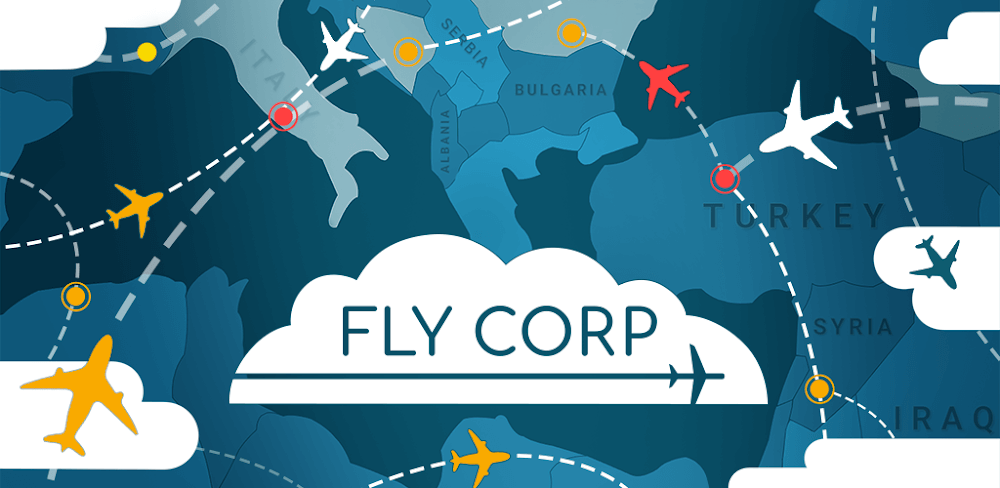In an increasingly interconnected world, where mobile devices serve as primary gateways to information, entertainment, and productivity, the landscape of Android applications is continuously evolving. Users worldwide are constantly seeking efficient, secure, and diverse ways to access the software that powers their digital lives. This pursuit has brought into sharp focus the various methods of acquiring Android applications, moving beyond traditional app stores to explore alternative avenues that promise speed, expanded choice, and a tailored user experience. Understanding the intricacies of this dynamic environment is crucial for both consumers looking to optimize their mobile experience and developers aiming to reach a global audience effectively.
The Pursuit of Expedited Access to Android Applications
The digital age demands immediacy, and this expectation extends profoundly to how users acquire their desired Android applications. In a world characterized by rapid technological advancement and instant gratification, waiting for an application to become available or to download slowly can be a significant point of frustration. The drive to get apps faster is not merely about impatience; it reflects a fundamental need for efficiency and seamless integration into our daily routines.
The primary benefit of swift application acquisition lies in its ability to enhance user productivity and satisfaction. When a user identifies a need for a specific tool or a desire for new entertainment, the ability to download and install it quickly means less downtime and a more immediate fulfillment of that need. This is particularly relevant in fast-paced professional environments, where access to critical business applications without delay can impact workflow and decision-making. Moreover, for casual users, immediate access to trending games or social media platforms ensures they remain connected and engaged with current digital trends.
Furthermore, faster access often means staying ahead of the curve. New applications and updates frequently introduce innovative features, security enhancements, or compatibility improvements. Users who can download these rapidly benefit from the latest innovations, often gaining a competitive edge or simply enjoying a superior user experience sooner. This agility in acquiring software contributes significantly to a more dynamic and responsive mobile ecosystem, where users are empowered to adapt their digital toolkit as quickly as their needs evolve.
The global nature of the internet also means that regional restrictions or phased rollouts can sometimes delay access to highly anticipated apps. For many users, finding reliable methods to acquire these applications swiftly, often through secure third-party platforms, becomes essential. This ensures that geographical boundaries do not limit their access to cutting-edge mobile technology and diverse content.
Ultimately, the quest for expedited access to Android applications is a testament to the digital consumer’s demand for speed, efficiency, and ubiquitous availability. It underlines the importance of robust distribution channels that can cater to a global audience with diverse needs and varying internet infrastructure.
- Enhanced Productivity: Quicker access to tools and resources means less waiting and more doing, optimizing workflow for both professional and personal use.
- Immediate Engagement: For entertainment or social applications, swift downloads ensure users can participate in trending topics or events without delay.
- Access to Latest Features: Rapid updates mean users can benefit from new functionalities, improved security, and bug fixes sooner, ensuring they always have the best version of an app.
- Overcoming Geographical Barriers: Efficient download methods can help users bypass regional restrictions, gaining access to applications not readily available in their local app stores.
- Reduced Frustration: A smooth and quick download process minimizes user frustration, contributing to a more positive overall experience with their mobile device.
The ability to acquire Android applications swiftly is a cornerstone of modern mobile usage, underpinning user satisfaction and enabling a dynamic digital lifestyle. It’s about empowering users to customize their devices and access the tools they need, precisely when they need them.

Ensuring Security and Integrity in Application Downloads
While speed and accessibility are highly valued in the digital realm, the paramount concern for any user acquiring new software, particularly Android applications, must be security. The internet is replete with potential threats, and malicious software disguised as legitimate applications poses a significant risk to personal data, device integrity, and overall digital well-being. Therefore, understanding how to download applications securely is not just a recommendation but a critical necessity in today’s mobile app ecosystem.
The official Google Play Store employs rigorous security checks, but users often explore alternative sources, such as direct APK downloads, for various reasons including regional availability, older versions, or beta access. When venturing beyond official channels, vigilance becomes even more crucial. Users must prioritize reputable third-party platforms that have established a track record of providing genuine and untampered application files. These platforms often implement their own security protocols, including malware scanning and digital signature verification, to ensure the integrity of the files they host.
A key aspect of secure downloading involves verifying the authenticity of the application. This can include checking developer information, reading user reviews, and comparing file hashes against official releases if available. Users should be wary of applications that request excessive permissions unrelated to their core functionality, as this can be a red flag for potential data exploitation. Furthermore, maintaining up-to-date antivirus software on the device and regularly scanning downloaded files provides an additional layer of protection against hidden threats.
The consequences of insecure downloads can be severe, ranging from data theft and privacy breaches to device damage and financial fraud. Malicious applications can install spyware, ransomware, or adware, severely compromising the user’s digital security. Therefore, every step taken to ensure the authenticity and safety of an application before installation is an investment in protecting one’s digital life. For a deeper understanding of safeguarding your device, you can read the full guide on enhancing Android security on our site, which provides comprehensive advice for navigating the mobile landscape safely.
- Trustworthy Sources: Always prioritize downloading from well-known and reputable platforms that have a proven record of providing safe files.
- Permission Verification: Scrutinize the permissions an app requests during installation; if they seem excessive or irrelevant, proceed with caution.
- Antivirus Protection: Utilize reliable mobile antivirus software to scan downloaded files and regularly check your device for potential threats.
- Developer Credibility: Research the app developer. Established developers with a history of creating legitimate apps are generally more trustworthy.
- User Reviews and Ratings: Pay attention to feedback from other users, looking for any reports of suspicious behavior or security issues.
- Regular Updates: Keep your operating system and all applications updated, as updates often include critical security patches.
By adopting a cautious and informed approach to application downloads, users can significantly mitigate risks and enjoy the vast benefits of Android applications without compromising their digital security. It is a balance between convenience and prudence, with security always taking precedence.

Optimizing User Experience and Expanding Digital Horizons
The ultimate goal of acquiring Android applications is to enhance the user’s overall mobile experience. This enhancement stems from not just the functionality of the apps themselves, but also from the seamlessness of their acquisition, their impact on device performance, and the expanded possibilities they unlock. A truly optimized user experience extends beyond mere app installation; it encompasses compatibility, resource management, and access to a diverse range of digital content.
One critical aspect of enhancing user experience is ensuring device compatibility. Not all applications are optimized for every device or Android version. By carefully selecting applications that are known to perform well on a specific device, users can avoid frustrating crashes, lags, and battery drain. This often involves checking system requirements and reading reviews that pertain to similar device models. When users thoughtfully choose apps that align with their hardware, they ensure a smoother and more responsive interaction, contributing to a fluid and enjoyable mobile experience.
Furthermore, an enhanced user experience is intrinsically linked to the ability to access a wider range of content. While official app stores offer a vast selection, there are legitimate reasons why users might seek applications from alternative sources. These can include regionally restricted apps, open-source projects, or specialized utilities that cater to niche interests. Accessing these diverse applications allows users to personalize their devices more deeply, tailoring their mobile environment to their precise needs and preferences. This freedom of choice fosters a more inclusive and adaptable mobile ecosystem, where every user can find the tools and entertainment that resonate with them.
The process of downloading APKs securely and efficiently can significantly contribute to this expanded access. By understanding how to navigate these alternative channels safely, users can unlock a wealth of applications that might otherwise be out of reach. This broadens their digital horizons, enabling them to explore new functionalities, engage with different communities, and stay connected with global trends. The emphasis here is on informed choice and responsible exploration, ensuring that increased access does not come at the expense of security or device integrity.
Finally, the user experience is also shaped by the efficiency of resource utilization. Well-optimized applications consume less battery, storage, and processing power, ensuring that the device remains fast and functional throughout the day. Choosing apps that are lean and efficient, especially when sourcing from alternative platforms, helps maintain optimal device performance. This mindful approach to app selection and management directly translates into a more satisfying and enduring mobile experience.

Conclusion: Navigating the Future of Android Application Access
The journey through the world of Android application acquisition reveals a multifaceted landscape where speed, security, user experience, and content accessibility are inextricably linked. As mobile technology continues its rapid evolution, the methods and considerations surrounding how we obtain our digital tools become ever more critical. The insights gathered suggest a clear path forward for users and stakeholders alike: embrace efficiency, prioritize security, and continuously seek to enhance the mobile experience.
The demand for faster access to Android applications is a testament to the fast-paced nature of modern life, where immediate solutions and seamless digital integration are expected. Whether for productivity, entertainment, or staying connected, the ability to quickly deploy an application is a significant driver of user satisfaction. However, this pursuit of speed must never overshadow the foundational importance of security. As our devices become repositories of increasingly sensitive personal and professional data, the integrity and safety of every downloaded application are paramount. Users must remain vigilant, leveraging reputable sources and best practices to safeguard against the pervasive threats in the digital environment.
Ultimately, the aim is to empower users to curate a rich, personalized, and robust mobile ecosystem that truly serves their individual needs. This involves not only accessing applications quickly and securely but also ensuring they contribute to an optimized user experience, characterized by compatibility, efficient resource use, and broad content availability. The evolving landscape of Android applications, with its dynamic interplay of official and alternative distribution channels, offers unparalleled opportunities for customization and innovation.
Looking ahead, the mobile app ecosystem will likely continue to diversify, with emerging technologies like AI and augmented reality shaping new categories of applications. This ongoing evolution will further underscore the need for flexible, secure, and user-centric methods of application distribution and discovery. For users, the key recommendation is to stay informed, exercise discretion, and continuously update their knowledge of mobile security best practices. For developers and platforms, the imperative is to continue innovating while reinforcing trust and transparency, ensuring that the promise of mobile technology remains accessible and safe for everyone.
By understanding and actively managing these key aspects—speed, security, and user experience—individuals can confidently navigate the vast and exciting world of Android applications, unlocking the full potential of their mobile devices in an ever-connected world. To learn more about navigating specific app categories and troubleshooting, consider exploring our extensive app reviews and guides on specific app categories.









There are no comments yet :(